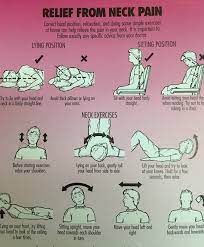The Power of Visualization
Visualization is a powerful technique that involves imagining a specific outcome or goal in great detail. It is a mental rehearsal that can help individuals achieve success, improve performance, reduce stress, and enhance overall well-being.
When we visualize a desired outcome, our brain interprets it as a real experience. This process activates neural networks in the brain associated with the actual performance of the task, creating new neural pathways that support our goals.
Athletes often use visualization to enhance their performance. By mentally rehearsing their routines or strategies, they can improve muscle memory, focus, and confidence. Studies have shown that visualization can lead to tangible improvements in athletic performance.
Visualization is not limited to sports; it can be applied to various aspects of life. Whether you are preparing for a presentation, striving to achieve a personal goal, or seeking to reduce anxiety, visualization can be a valuable tool in your toolkit.
To practice visualization effectively, find a quiet space where you can relax and focus. Close your eyes and imagine yourself achieving your goal in vivid detail. Engage all your senses – see, hear, feel, and even smell the environment around you in your mind’s eye.
Consistent practice of visualization can help reprogram your subconscious mind and align your thoughts and actions with your desired outcomes. It can boost motivation, increase self-confidence, and foster a positive mindset conducive to success.
Whether you are visualizing yourself acing an interview, excelling in a competition, or simply feeling more at peace with yourself, harnessing the power of visualization can lead to transformative results in various areas of your life.
8 Benefits of Visualization: From Boosting Focus to Promoting Well-Being
- Enhances focus and concentration.
- Boosts motivation and goal-setting abilities.
- Reduces stress and anxiety levels.
- Improves self-confidence and self-esteem.
- Enhances creativity and problem-solving skills.
- Aids in skill development and performance improvement.
- Helps in overcoming obstacles and challenges more effectively.
- Promotes a positive mindset and overall well-being.
Challenges of Visualization: Managing Expectations, Ensuring Action, and Maintaining Focus
- Visualization may lead to unrealistic expectations if not grounded in reality, potentially setting individuals up for disappointment.
- Over-reliance on visualization alone without taking concrete actions may result in a lack of progress towards goals.
- Some individuals may find it challenging to maintain focus and clarity during visualization exercises, leading to frustration and reduced effectiveness.
Enhances focus and concentration.
Visualization is a powerful tool that can significantly enhance focus and concentration. By vividly imagining a specific task or goal, individuals can train their minds to stay attentive and engaged. This mental rehearsal helps block out distractions and sharpen the ability to maintain attention on the desired outcome. Through regular practice of visualization techniques, individuals can strengthen their cognitive abilities, improve their ability to concentrate for extended periods, and ultimately boost their overall productivity and performance in various aspects of life.
Boosts motivation and goal-setting abilities.
Visualization is a powerful tool that can significantly boost motivation and enhance goal-setting abilities. By vividly imagining oneself achieving a specific goal, individuals can ignite their inner drive and focus on the desired outcome. This mental rehearsal not only increases motivation but also clarifies objectives, making them more tangible and achievable. Visualization helps individuals visualize the steps needed to reach their goals, reinforcing their commitment and determination to succeed. By regularly practicing visualization techniques, individuals can strengthen their resolve, stay motivated, and effectively set and pursue their goals with clarity and purpose.
Reduces stress and anxiety levels.
Visualization is a powerful technique that has been shown to effectively reduce stress and anxiety levels. By engaging in guided imagery and picturing calming scenes or positive outcomes, individuals can shift their focus away from worrisome thoughts and emotions. This process helps activate the relaxation response in the body, leading to decreased levels of cortisol (the stress hormone) and promoting a sense of calmness and well-being. Through regular practice of visualization, individuals can cultivate a greater sense of control over their emotions and reactions, ultimately leading to reduced stress and anxiety in various aspects of their lives.
Improves self-confidence and self-esteem.
Visualization is a powerful tool that can significantly enhance self-confidence and self-esteem. By vividly imagining oneself succeeding, achieving goals, and overcoming challenges, individuals can cultivate a strong sense of self-belief and empowerment. Through visualization, people can visualize positive outcomes and internalize feelings of success, which in turn boosts their confidence levels. This mental rehearsal not only helps individuals build a positive self-image but also instills a deep sense of self-worth and resilience in facing life’s obstacles.
Enhances creativity and problem-solving skills.
Visualization enhances creativity and problem-solving skills by allowing individuals to explore different perspectives, scenarios, and solutions in their minds. When we visualize a problem or challenge, we can mentally manipulate variables, test hypotheses, and envision innovative approaches. This creative visualization process stimulates the brain’s neural networks associated with critical thinking and creativity, leading to fresh insights and novel ideas. By engaging in visualizing various possibilities, individuals can expand their creativity, think outside the box, and develop effective strategies for solving complex problems.
Aids in skill development and performance improvement.
Visualization serves as a powerful tool in aiding skill development and enhancing performance improvement. By mentally rehearsing specific tasks or scenarios, individuals can strengthen neural pathways associated with those skills, leading to improved muscle memory, focus, and confidence. Athletes, professionals, and individuals seeking personal growth can benefit from visualization techniques to refine their abilities, boost motivation, and optimize their performance outcomes. Through consistent practice of visualization, individuals can effectively enhance their skill sets and elevate their overall performance in various areas of life.
Helps in overcoming obstacles and challenges more effectively.
Visualization is a powerful tool that can aid individuals in overcoming obstacles and challenges more effectively. By mentally rehearsing successful outcomes and envisioning themselves navigating difficulties with resilience and determination, individuals can boost their confidence, problem-solving skills, and emotional resilience. Visualizing the process of overcoming obstacles can help individuals approach challenges with a proactive mindset, enabling them to stay focused on solutions rather than getting overwhelmed by setbacks. This practice not only enhances one’s ability to tackle challenges head-on but also instills a sense of belief in one’s capabilities to surmount any hurdles that come their way.
Promotes a positive mindset and overall well-being.
Visualization is a powerful tool that promotes a positive mindset and overall well-being. By envisioning success, happiness, and fulfillment in our minds, we cultivate a sense of optimism and confidence that can positively impact our mental and emotional state. The act of visualizing desired outcomes can reduce stress, increase motivation, and instill a sense of purpose and direction in our lives. This practice not only enhances our well-being but also empowers us to approach challenges with resilience and a proactive attitude, ultimately leading to greater fulfillment and satisfaction in all aspects of life.
Visualization may lead to unrealistic expectations if not grounded in reality, potentially setting individuals up for disappointment.
Visualization, when not grounded in reality, can sometimes lead to unrealistic expectations that may set individuals up for disappointment. While visualization is a powerful tool for goal-setting and motivation, it is important to maintain a balance between envisioning success and acknowledging the practical steps needed to achieve it. When individuals solely focus on an idealized outcome without considering the challenges and obstacles along the way, they may be unprepared for setbacks and may feel disheartened if reality does not align with their visualized goals. It is crucial to use visualization as a supportive practice alongside realistic planning and action-taking to ensure sustainable progress towards desired outcomes.
Over-reliance on visualization alone without taking concrete actions may result in a lack of progress towards goals.
Over-reliance on visualization alone without taking concrete actions may result in a lack of progress towards goals. While visualization is a powerful tool for clarifying intentions and boosting motivation, it is essential to complement it with tangible steps and consistent efforts towards achieving those goals. Merely imagining success without actively working towards it can create a false sense of accomplishment and hinder actual progress. It is crucial to strike a balance between visualizing success and taking practical steps to turn those visions into reality. Action is key in realizing goals, and visualization should serve as a supportive tool rather than a substitute for proactive measures.
Some individuals may find it challenging to maintain focus and clarity during visualization exercises, leading to frustration and reduced effectiveness.
Some individuals may find it challenging to maintain focus and clarity during visualization exercises, leading to frustration and reduced effectiveness. Distractions, wandering thoughts, or difficulty in vividly imagining the desired outcome can hinder the efficacy of visualization techniques. When individuals struggle to stay engaged in the process, they may not fully harness the benefits that visualization can offer. This lack of focus can impede the creation of strong neural connections and limit the ability to reprogram subconscious beliefs effectively. It is important for individuals facing this con to explore strategies such as guided visualization sessions, mindfulness practices, or seeking support from a coach to enhance their ability to concentrate and derive maximum benefit from visualization exercises.




Thhis iss my firt tije go too see aat here andd i
amm really happy too read everthing att singlke place.
Thank you for visiting jablex.com and sharing your thoughts on the power of visualization. We’re glad to hear that you enjoyed reading about this technique and its benefits. Visualization can indeed be a valuable tool in achieving various goals and improving overall well-being. If you have any questions or would like to learn more about visualization, feel free to explore our blog for additional insights and resources.